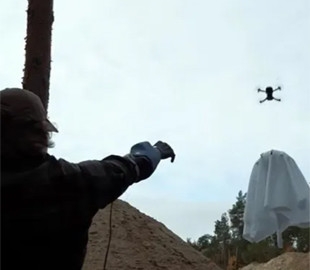
Esper Bionics is developing the MARS system, which uses sensors and AI to control the prosthesis through muscles. The technology will allow drones to be controlled by movements of the prosthetic limb and muscle contractions.
The new MARS prosthesis control system uses special sensors and artificial intelligence to recognize muscle movements. The user will be able to control the drone, changing the position of the prosthesis in space and straining various muscles. This was stated by the Deputy Prime Minister and Minister of Innovation, Development of Education, Science and Technology – Minister of Digital Transformation Mykhailo Fedorov, UNN reports.
200% Deposit Bonus up to €3,000 180% First Deposit Bonus up to $20,000“Brave1 participant Esper Bionics is testing a new technology. The new MARS prosthesis control system uses special sensors and artificial intelligence to recognize muscle movements. Thanks to the solution, the prosthesis can literally understand the user's intentions. This approach makes controlling the prosthesis more natural and opens up new possibilities in the future to control technologies, for example, drones,” Fedorov wrote.

